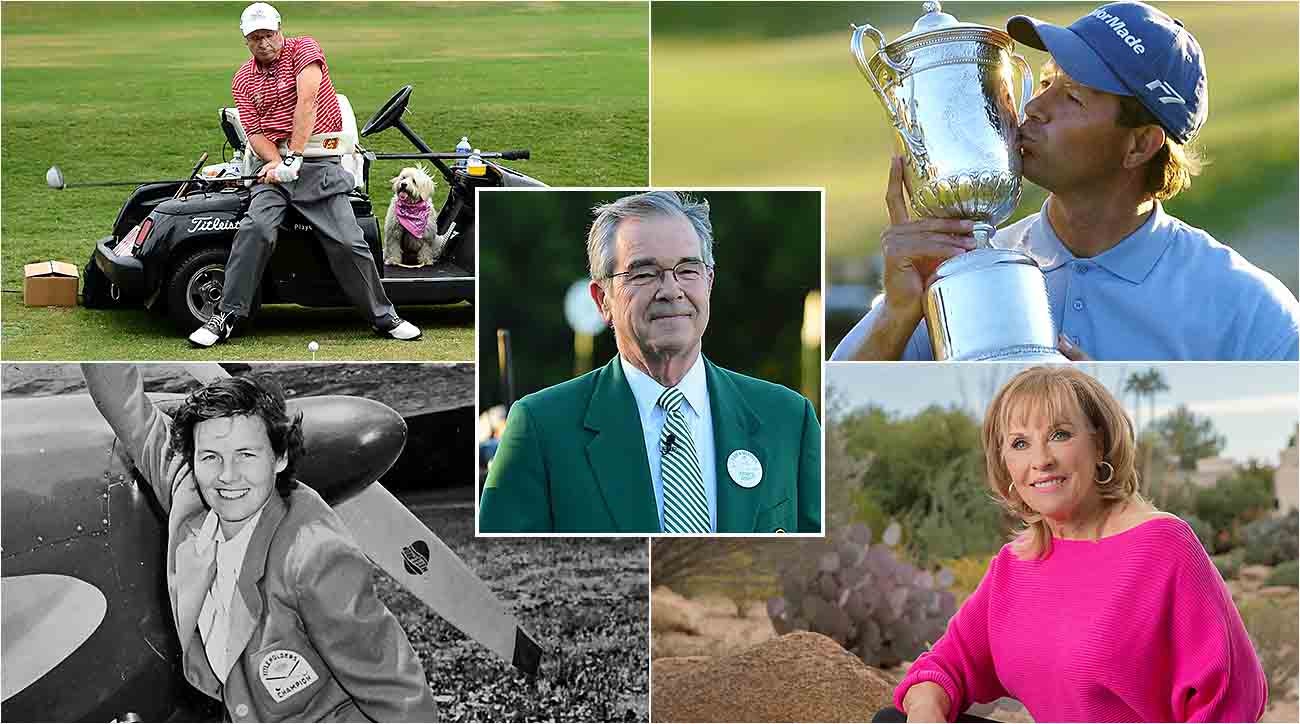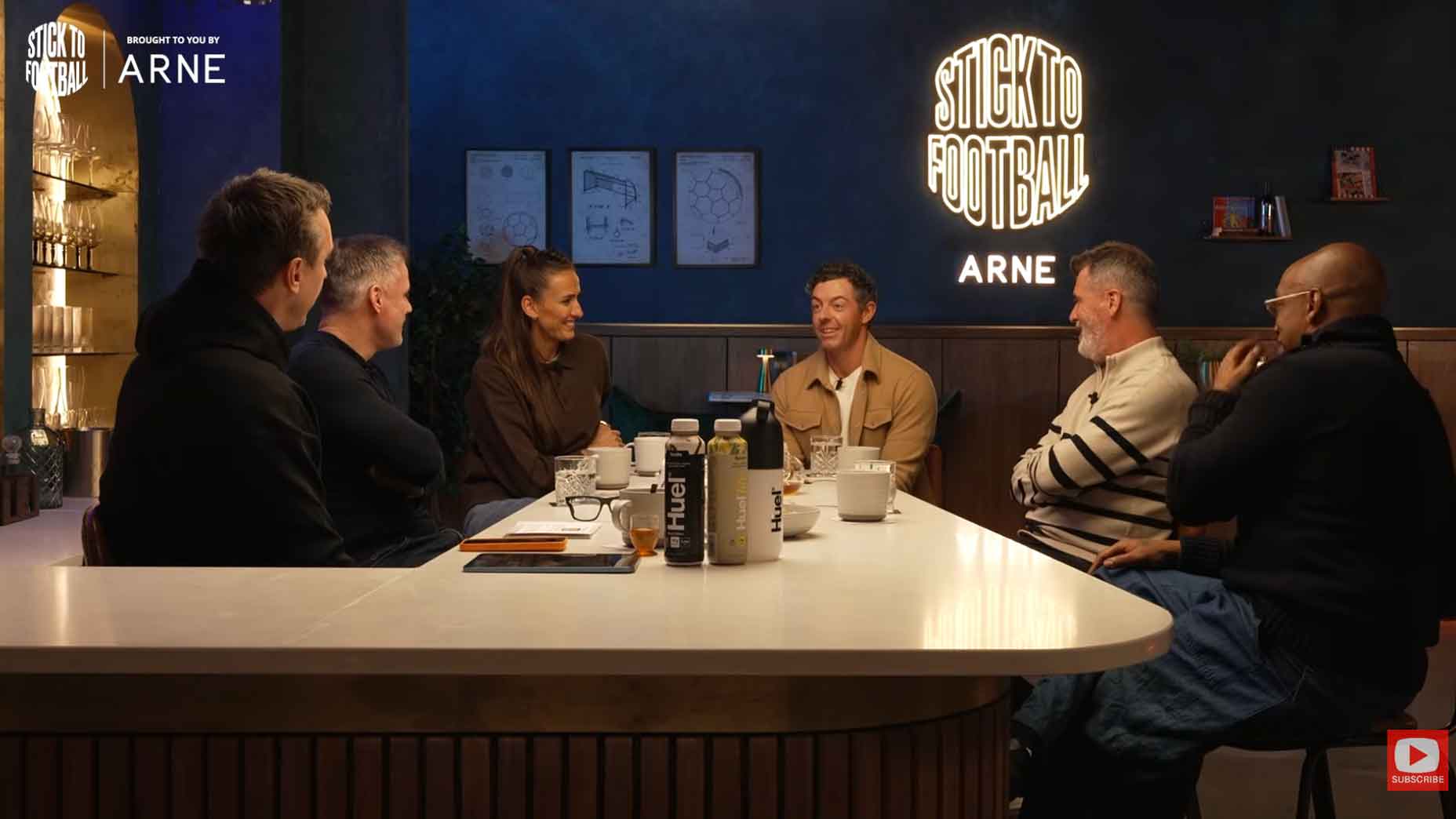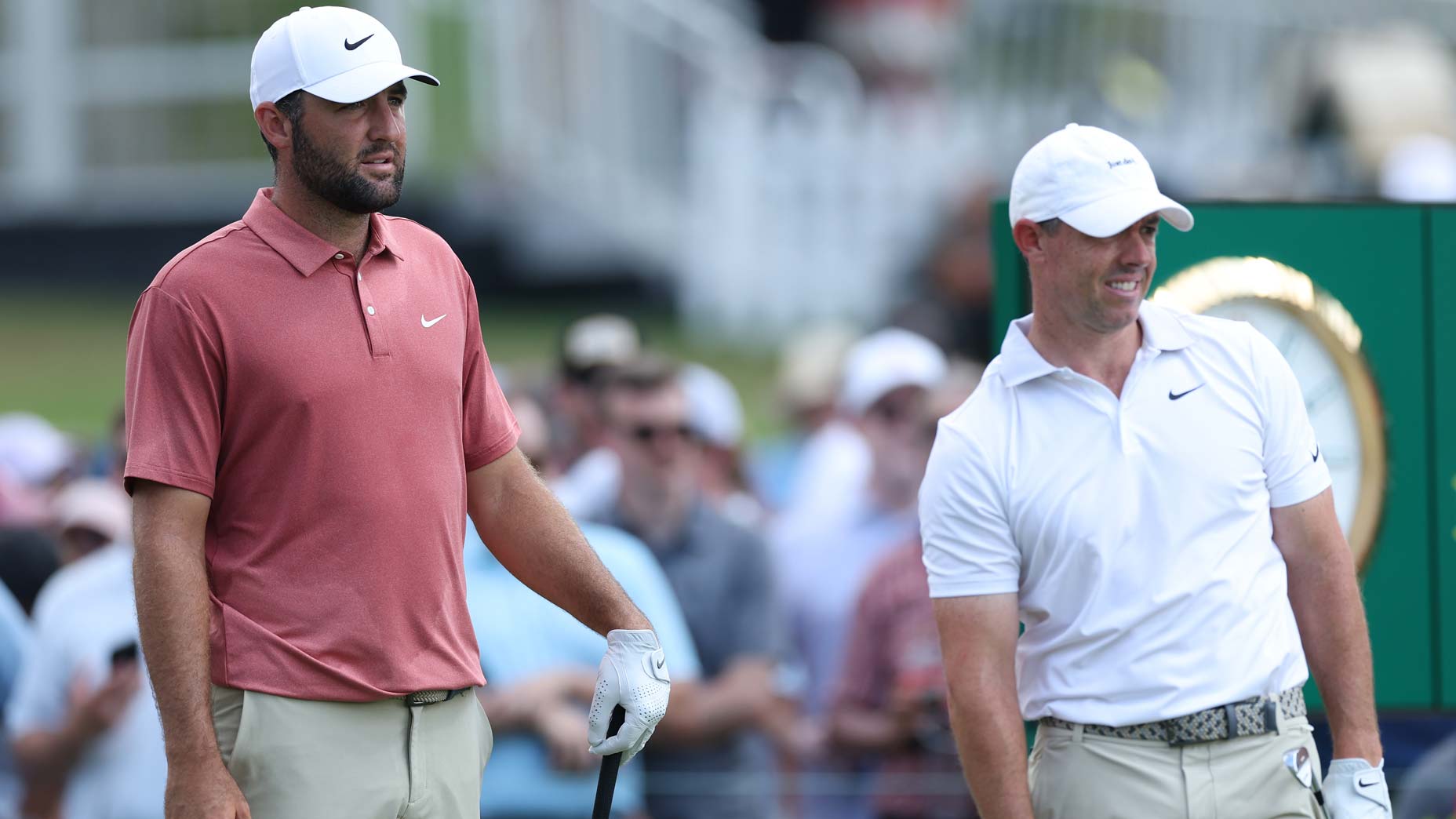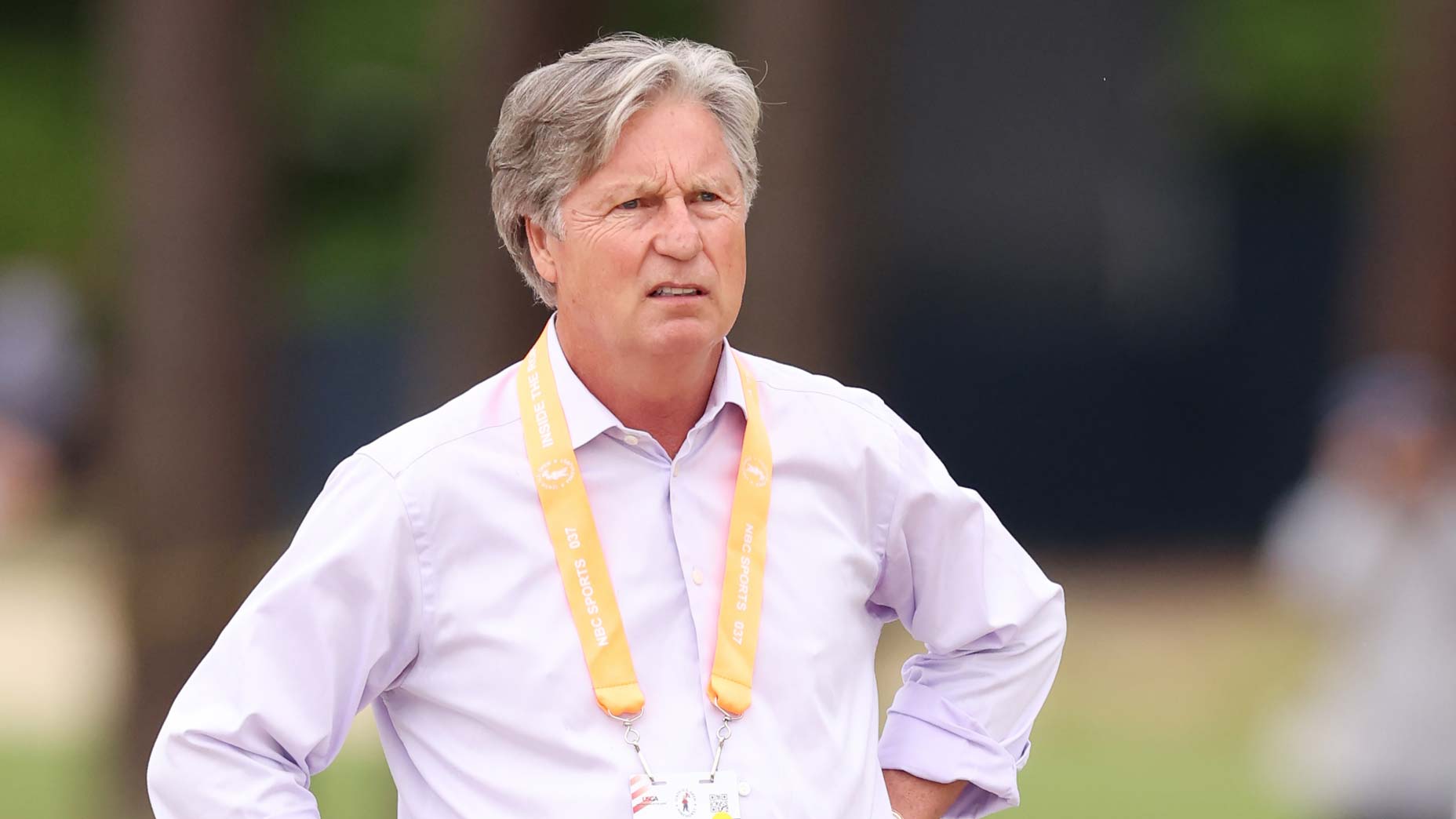Cel-e-brate good times, c’mon! Here is some news that sounds like a party: the next World Golf Hall of Fame class is an eclectic, half-odd fivesome of diverse golfing personalities that shows the many paths the game has to success, accomplishment and impact. One is deceased, the late and great Peggy Kirk Bell, which means the surviving four will have to compensate for her absence on the dance floor. Here’s looking at you, BillaPayne! The other new inductees will be the ground-breaking Australian golfer Jan Stephenson, the reserved South African golfer Retief Goosen and Dennis Walters, an American trick-shot artist—from a wheelchair!
William Porter Payne is the frontman of this group, even though he was the last to arrive on the national and international golf scene. As recently as 1996, while still in his late 40s, Billy Payne was just another suit-and-tie guy for whom golf was a way to compete and develop business relationships. But he was also the man bringing the Olympics to Atlanta. He got a bee in his bonnet about having golf — for men and women, at Augusta National — as an Olympic sport. It didn’t happen but along the way he developed a relationship with Jack Stephens, then the chairman of the club, who made Payne a member, the ultimate prize for a certain sort of Atlanta businessman. Stephens was succeeded by Hootie Johnson and Johnson named Payne, in 2006, as his successor.
In 11 years as chairman of the club, Payne, reinvented the Masters experience, for the players and even more for the fan. He did this by making the fields smaller, the driving range bigger, parking (for all) easier and by making more modern every aspect of the club and how it is run. No group in golf has embraced the internet more than the Augusta National Golf Club under Payne.
He changed the membership by making women members of the club and tried to make the club feel clubbier for its members, rather than the ultimate golf timeshare.

But by far the most significant thing Payne did as chairman was redefine the club’s ultimate purpose. Payne decided the club (to use a phrase he often did and Bobby Jones, the club’s co-founder, did not) should find ways to “grow the game.” Payne did that by creating and sponsoring two international amateur events, the Asian-Pacific and Latin America Amateur Championships, and offering the winner of those events an invitation to play in the Masters. There is no saying how many millions of people in China started paying attention to golf when 14-year-old Guan Tianlang made the cut in the 2013 Masters. He also was instrumental in the club’s embrace of the Drive, Chip & Putt competition. The club’s sponsorship of the Augusta National Women Amateur, which will be held next year for the first time, came under the new chairman, Fred Ridley, but the path to its creation was paved by some of Payne’s initiatives.
Viewed that way, it’s fitting that Payne will be inducted with two women, Peggy Kirk Bell, who should have been inducted years ago, and Jan Stephenson, who was golf’s Greg Norman before anybody outside of Queensland ever heard of the Great White Shark.
Peggy Kirk Bell, who died in 2016 at age 95, was an accomplished amateur golfer who played college golf at Rollins College and played her best golf before the LPGA was formed in 1950. In 1949, as Peggy Kirk, she won an event called the Titleholders Championship, an annual women’s event held at the Augusta Country Club. She finished two shots ahead of the Sam Snead of women’s golf, Patty Berg, along with the amateur golfer Dorothy Kirby.
Bell knew all of golf’s legendary 20th-century figures, including Snead, Jones, Ben Hogan, Byron Nelson, Arnold Palmer and Jack Nicklaus, and all the many women Hall of Famers against whom she competed against or to whom she served as hostess, including Mickey Wright, Kathy Whitworth, Nancy Lopez and Annika Sorenstam. Bell owned and ran the Pine Needles Lodge & Golf Club, in rural North Carolina, where Sorenstam won the second of her third U.S. Open titles. That was the first Women’s Open played there. It was such a success, between the excellence of the course and the warmth and wit of its owner, the USGA has held the Women’s Open there twice since then. She was also a notable teacher.
Stephenson, who is 66, was, unabashedly, the first woman professional golfer to use her sexuality in a bold marketing effort. Coming of age in golf in the mid-1970s, when millions of American men were obsessing about a certain poster of the TV star Farrah Fawcett, Stephenson produced what was, then, a provocative calendar, including a famous photo of her in a bathtub covered by Maxfli golf balls.
Her various marketing efforts worked for two primary reasons: the camera loved her, and she could play. She’s getting into the Hall of Fame, deservedly, on the basis of her play. Her 16 LPGA wins include the 1982 LPGA Championship and the 1983 U.S. Open, where she finished a shot ahead of two future Hall of Famers, Patty Sheehan and JoAnne Carner. She also won in Europe, Japan, Australia, as a senior golfer and, notably, in the 1983 JCPenney Mixed Team Classic, with Fred Couples. Couples is in the Hall of Fame. Stephenson has done more in women’s golf than Couples did in the men’s game.
As for Goosen, he won only seven times on the PGA Tour, but two of those wins were U.S. Opens, in 2001, at Southern Hills in playoff, and 2004, and Shinnecock Hills, over greens that were famously lost by the last round. His almost bizarrely calm demeanor explains a great deal about his success in golf’s most headache-inducing championship. Goosen had and has one of the great rhythmic swings in golf history, a swing that brings to mind the sweet swings of his countryman Ernie Els, and also Steve Elkington and Karrie Webb.
His golf in the United States would likely not have qualified him for the World Golf Hall of Fame, but it did in conjunction with his nearly 30 other wins in different parts of the world, including the national championships of South Africa, Germany, France, Canada and Scotland. He was also on six Presidents Cup teams. He’s completely deserving — likely the most deserving of this fivesome. At the very least, his accomplishments in the game are the easiest to measure.
By that standard, Dennis Walters’s life in golf is the hardest to measure, but is one of the most inspiring ever. He was an aspiring pro in 1974 when a horrible golf-cart accident left him paralyzed from the waist down. Since 1977, Walters has done over 4,000 golf exhibitions, aided by one adorable dog or another, where he plays absolutely extraordinary shots from the swiveling seat of a golf cart. His swing is a study in repetition and the value of having a swing on plane. But it is his life story that has inspired tens of thousands of people, and it may be summarized this way: if one path to your dream life closes, try to open another, even if you have to kick down a door to do it.
On the World Golf Hall of Fame is off I-95 in northern Florida but next year’s induction ceremony will take place near Pebble Beach, on June 10, the Monday before the first day of the U.S. Open. There will be speeches, an open bar, and dancing. Don’t expect much from Billy Payne and less from Peggy Kirk Bell. Jan Stephenson seems like she would be a good dancer and Retief Goosen a sneaky one. But the dark horse here is Dennis Walters. Watch out for that guy.
Michael Bamberger may be reached at mbamberger0224@aol.com.






